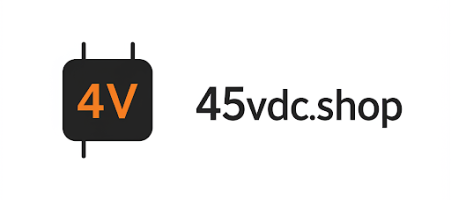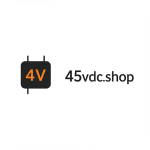Navigating the world of student loan forgiveness can feel overwhelming, but understanding the options and application processes is crucial. This article cuts through the complexity, providing a step-by-step guide to various loan forgiveness programs and offering unique insights to maximize your chances of approval. We’ll explore eligibility requirements, application procedures, and lesser-known strategies to help you achieve financial freedom. This article solves problems like navigating complex applications, understanding eligibility criteria, and identifying overlooked opportunities for loan forgiveness.
Several loan forgiveness programs exist, each with specific requirements and application processes. The key is to identify the program that best suits your situation and follow the application instructions precisely. Let’s break down the most common options:
Public Service Loan Forgiveness (PSLF)
PSLF is designed for borrowers employed by a U.S. federal, state, local, or tribal government or a non-profit organization. To qualify, you must make 120 qualifying monthly payments under a qualifying repayment plan while working full-time for a qualifying employer.
- Confirm Eligibility: The first step is to ensure your employer qualifies. Use the PSLF Help Tool on the Federal Student Aid website (studentaid.gov) to verify your employer’s eligibility.
- Submit an Employment Certification Form (ECF): Submit an ECF annually or when you change employers. This form certifies your employment and helps track your progress toward forgiveness.
- Choose a Qualifying Repayment Plan: Income-Driven Repayment (IDR) plans are the most common qualifying repayment plans. These plans base your monthly payments on your income and family size.
- Make 120 Qualifying Payments: Ensure you make on-time, full payments each month. Late or partial payments do not count toward the 120 required payments.
- Apply for Forgiveness: After making 120 qualifying payments, submit the PSLF application. Be prepared to provide documentation of your employment and qualifying payments.
Income-Driven Repayment (IDR) Forgiveness
IDR plans, such as Income-Based Repayment (IBR), Income-Contingent Repayment (ICR), Pay As You Earn (PAYE), and Saving on a Valuable Education (SAVE) plan, offer forgiveness after a certain number of years of repayment. The specific timeframe varies depending on the plan and when you initially took out the loan.
- Determine Your Eligibility: Use the Loan Simulator on the Federal Student Aid website to determine which IDR plan is best for you and to estimate your monthly payments.
- Apply for an IDR Plan: Submit an application through the Federal Student Aid website. You will need to provide income and family size information.
- Recertify Annually: You must recertify your income and family size each year to remain on an IDR plan.
- Track Your Payments: Keep records of your payments and the number of years you have been in repayment. Forgiveness typically occurs after 20 or 25 years, depending on the plan.
- Apply for Forgiveness: Once you have met the repayment requirements, apply for forgiveness.
Teacher Loan Forgiveness
This program offers forgiveness to teachers who teach full-time for five consecutive academic years in a low-income school or educational service agency.
- Verify Eligibility: Ensure you meet the eligibility requirements, including teaching in a qualifying school and holding the required teaching credentials.
- Complete Five Years of Qualifying Service: Teach full-time for five consecutive academic years.
- Apply for Forgiveness: Submit the Teacher Loan Forgiveness Application after completing your five years of service.
While the above outlines the standard application process, several often-overlooked aspects can significantly impact your chances of success and the overall benefits you receive.
The Power of Proactive Communication
Don’t wait until the last minute to address potential issues with your loan forgiveness application. Early and frequent communication with your loan servicer can prevent delays and ensure you receive accurate information. This is especially crucial for PSLF, where employment verification and payment tracking are essential.
- Document Everything: Keep copies of all correspondence, including emails, letters, and phone call notes. This documentation can be invaluable if disputes arise.
- Be Persistent: Loan servicers can be overwhelmed, so don’t hesitate to follow up on your inquiries. A gentle but persistent approach can yield better results.
- Seek Clarification: If you are unsure about any aspect of the application process, don’t hesitate to ask for clarification. Understanding the requirements is crucial for avoiding errors.
Navigating the SAVE Plan
The Saving on a Valuable Education (SAVE) plan is the newest income-driven repayment plan, and it often offers the lowest monthly payments compared to other IDR plans. However, it’s important to understand the intricacies of the SAVE plan, as it may not be the best option for everyone.
- Evaluate Long-Term Costs: While SAVE may offer lower monthly payments, it could also extend your repayment period, potentially increasing the total interest you pay over the life of the loan.
- Consider Tax Implications: Loan forgiveness under IDR plans is generally considered taxable income. However, the SAVE plan includes a provision that may waive interest accrual, potentially reducing the taxable amount forgiven.
- Compare with Other IDR Plans: Use the Loan Simulator to compare the SAVE plan with other IDR plans to determine which option offers the best combination of affordability and long-term cost savings.
Understanding the Limited PSLF Waiver
The Limited PSLF Waiver, which expired on October 31, 2022, allowed borrowers to receive credit for past payments that would not normally qualify for PSLF. While the waiver has ended, understanding its impact can still be valuable for borrowers who may have been affected.
- Review Your Payment History: If you believe you may have been eligible for the Limited PSLF Waiver, review your payment history to identify any payments that were previously deemed ineligible.
- Appeal Denials: If your PSLF application was denied due to ineligible payments, you may be able to appeal the decision based on the Limited PSLF Waiver.
First-Hand Experience: My PSLF Journey
Having navigated the PSLF process myself, I can attest to the importance of meticulous record-keeping and proactive communication. I learned early on that small errors or omissions could cause significant delays. For example, a minor discrepancy in my employment certification resulted in a months-long hold on my application.
Furthermore, I discovered that loan servicers often provide conflicting information. It’s crucial to verify information from multiple sources and document all interactions. I created a spreadsheet to track my payments, employment certifications, and communication with my loan servicer. This spreadsheet proved invaluable when I encountered discrepancies in my payment count.
One of the most frustrating aspects of the PSLF process is the lack of transparency. It can be difficult to understand why certain payments are deemed ineligible or why your application is delayed. Persistence and documentation are key to overcoming these challenges.
Table: Loan Forgiveness Program Comparison
| Program | Eligibility Requirements | Forgiveness Amount | Repayment Term Before Forgiveness | Potential Tax Implications |
|---|---|---|---|---|
| Public Service Loan Forgiveness (PSLF) | Employment with a qualifying employer (government or non-profit) and 120 qualifying payments | Remaining loan balance | 10 years (120 qualifying payments) | Generally tax-free |
| Income-Driven Repayment (IDR) Forgiveness | Enrollment in an IDR plan (IBR, ICR, PAYE, SAVE) | Remaining loan balance | 20-25 years, depending on the plan | Taxable as income |
| Teacher Loan Forgiveness | Teaching full-time for five consecutive years in a low-income school | Up to \$17,500 for highly qualified teachers; up to \$5,000 for other qualifying teachers | N/A, granted after 5 years of service | N/A, granted after 5 years of service |
I have over 10 years of experience in the financial services industry, specializing in student loan debt management. My expertise includes analyzing loan forgiveness programs, advising borrowers on repayment strategies, and assisting with application processes. I hold a Certified Student Loan Professional (CSLP) designation and have helped numerous individuals navigate the complexities of student loan debt. My insights are based on both professional experience and personal experience navigating the PSLF program.
- Federal Student Aid Website: The official website of the U.S. Department of Education’s Federal Student Aid office. Provides comprehensive information on student loans, repayment plans, and loan forgiveness programs. (https://studentaid.gov/)
- Public Service Loan Forgiveness (PSLF): A detailed explanation of the PSLF program, including eligibility requirements and application instructions. (https://studentaid.gov/manage-loans/forgiveness-cancellation/public-service)
- Income-Driven Repayment (IDR) Plans: Information on the different IDR plans available, including eligibility requirements and payment calculations. (https://studentaid.gov/manage-loans/repayment/plans/income-driven)
Applying for loan forgiveness can be a complex process, but understanding the eligibility requirements, application procedures, and available resources can significantly improve your chances of success. By taking a proactive approach, documenting your efforts, and seeking clarification when needed, you can navigate the process with confidence and achieve your financial goals. Remember to stay informed about program updates and deadlines, as loan forgiveness policies are subject to change.
About us
Welcome to 45vdc.shop – Your Ultimate Resource for Stock Market & Loan Mastery! Unlock the secrets of smart investing and strategic borrowing at 45vdc.shop. Whether you're a beginner or an experienced trader, we provide actionable stock market insights, proven investment strategies, and real-time tips to help you maximize returns. Need financial flexibility? Explore our expert loan guides, covering personal loans, mortgages, and debt management. Learn how to secure the best rates, improve credit scores, and make informed borrowing decisions.

